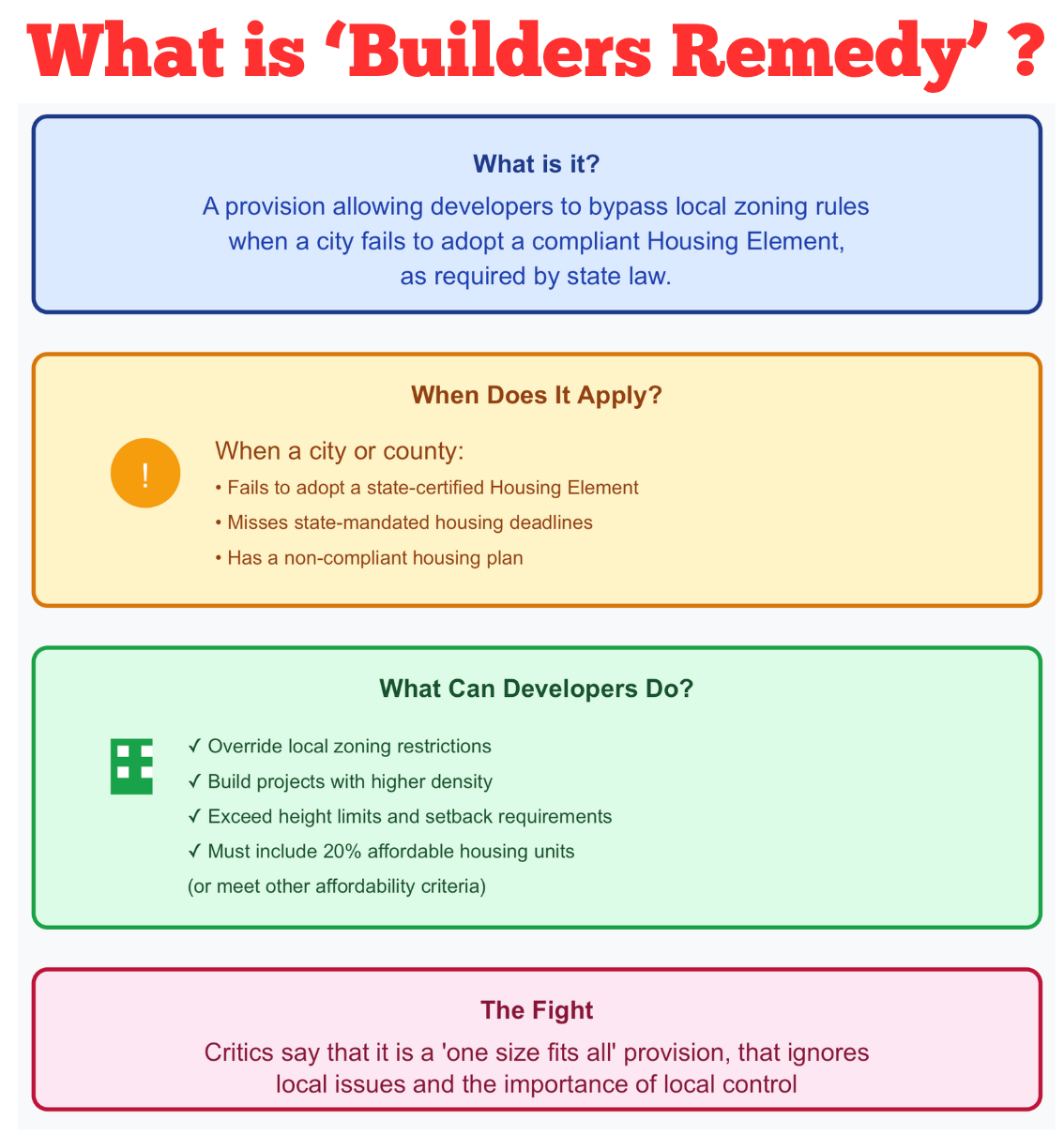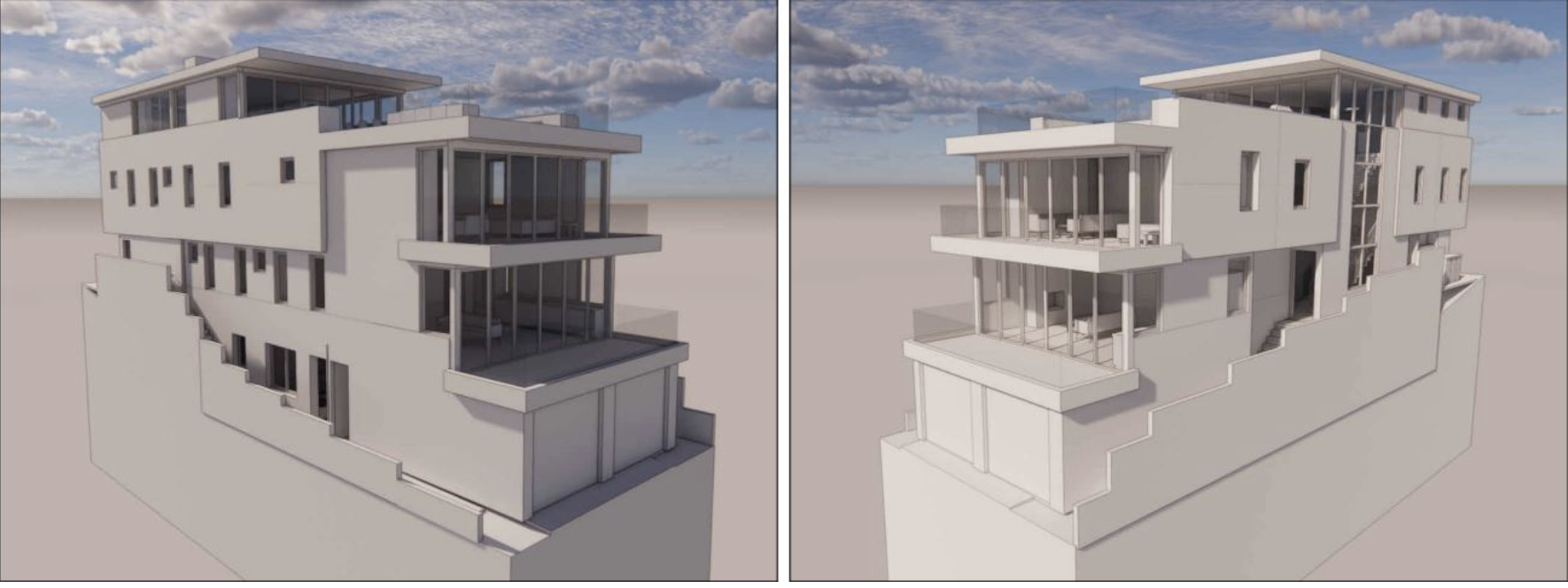Community rallies to raise funds for Mickey's Deli manager
Appeal launched after Mickey's Deli favorite Gonzalo Diaz suffered a stroke
How did one apartment building become a lightning rod for the argument over housing density ?

The story of Hermosa Beach's lone "builders remedy" project and what it teaches us about development and density locally
At first glance, 3415 Palm Drive is an unremarkable property. But this old four-unit apartment building has recently become the most talked-about development proposal in Hermosa Beach. Not because the existing structure is particularly notable, but because of what the owner wants to replace it with and how that proposal got its approval pathway.
This is Hermosa Beach's only "builders remedy" project, the one development that slipped through during the brief window when our city was out of compliance with state housing law. While neighboring cities like Santa Monica and Redondo Beach dealt with dozens of these state-override projects, Hermosa got just one. But that was enough to change everything.
The "builders remedy" sounds like bureaucratic jargon, but it's actually a powerful stick the state uses to force cities into compliance with housing laws. When a city doesn't have an approved housing plan, developers can bypass local zoning entirely—as long as they include some affordable units.
In most places, that meant towers and mega-developments. Santa Monica saw 15-story proposals. Redondo Beach got applications for massive mixed-use complexes that dwarfed anything in their downtown.
Hermosa Beach got one five unit apartment building.
The numbers tell the story. During Hermosa's period of non-compliance—roughly 18 months between 2022 and 2024—developers filed just one builders remedy application. Compare that to Santa Monica's 47 applications or Redondo Beach's 23.
Why the difference? Timing, mostly. Hermosa regained compliance in early 2024, before word spread widely about the builders remedy opportunity here.

The Ferraro family's original proposal called for demolishing the existing four-unit building and replacing it with a five-unit apartment building at 50 feet tall—significantly exceeding Hermosa Beach's legal 30-foot height limit. That's exactly the kind of override that makes builders remedy so controversial: a project that couldn't normally be built under local zoning suddenly becomes possible because the city fell out of compliance.
But the project may be changing. At last week's planning commission meeting, the Ferraros proposed an alternative: scaling back to four units at a lower height that would better fit the neighborhood. The revision came after facing organized opposition from neighbors and community groups including Save Hermosa and Our Neighborhood Voices, who have raised concerns about the project's impact on the residential character of Palm Drive.

What makes this project significant isn't its specific size, but what it represents. This happened because the city lost control of its zoning during non-compliance. Under builders remedy, developers can propose projects that exceed local height limits and density restrictions—exactly what occurred here.
Hermosa Beach's housing problem isn't abstract—it's math. The state requires the city to plan for 556 new homes by 2029, spread across different income levels. For a city with just 8,900 existing housing units and virtually no vacant land, that's a massive challenge.
Here's what those 556 units break down to:
The affordable housing requirements are what made Palm Drive possible under the builders remedy. By including affordable units, the developer met the state's minimum threshold to override local zoning.
The project counts toward the city's housing goals. These units contribute to the state mandate, meaning if the city had been able to block this project, it would still need to find replacement units somewhere else.
Understanding Palm Drive requires understanding how Hermosa Beach fell out of compliance in the first place. The city's initial housing plan, submitted in 2021, was rejected by the state three times. But the deeper issue was timing—Hermosa Beach delivered its housing element months after the state deadline.
The problem wasn't unwillingness to plan for housing—it was geography. With most of the city already built out and height limits protecting neighborhood character, finding realistic sites for 556 new units proved nearly impossible.
The city tried rezoning commercial areas along Pacific Coast Highway and Aviation Boulevard. They counted on accessory dwelling units in residential neighborhoods. They explored mixed-use development near the Pier. None of it added up to 556 units in a way the state found credible.
But residents and community groups have been critical of city staff for the delayed delivery. Many argue that the housing element should have been completed on schedule, preventing the builders remedy window that allowed projects like Palm Drive to proceed. The late submission created the very situation that groups like Save Hermosa and Our Neighborhood Voices now find themselves fighting against.
Meanwhile, the clock was ticking. Every month out of compliance increased the risk of builders remedy applications. The Ferraro family's proposal for Palm Drive came during this vulnerable period, taking advantage of the city's non-compliant status.
The most important lesson from Palm Drive may be what didn't happen. Unlike the massive projects proposed under builders remedy in other cities, this development remains relatively modest.
That modesty may be changing. The original 50-foot proposal clearly exceeded what would fit naturally on Palm Drive, where most buildings top out at two or three stories. The potential revision to four units at lower height suggests that even under builders remedy, practical constraints and community input can still influence project design.
Hermosa Beach officials closely studied how other cities handled builders remedy challenges. The lessons were sobering.
Santa Monica's aggressive opposition to builders remedy projects created a legal quagmire, with developers filing lawsuits and the city spending millions on attorneys. Most projects are still tied up in court years later.
Redondo Beach tried a more collaborative approach, working with developers to modify projects and reduce community opposition. Results were mixed—some projects got smaller, others proceeded unchanged.
The pattern everywhere was that fighting builders remedy rarely worked. The state law gives developers significant advantages once a city falls out of compliance.
That's why Hermosa Beach prioritized regaining compliance over fighting individual projects. The Palm Drive project was approved with minimal city input, but it prevented additional builders remedy applications.
Even with compliance achieved, Hermosa Beach faces continued pressure to accommodate new housing. The city must update its housing plan every eight years, with new targets set by the state each cycle.
Early indications suggest the next round of requirements, covering 2029-2037, will be even higher than current targets. Regional population growth and job creation continue outpacing housing construction throughout Southern California.
Compliance isn't a one-time achievement. The city must continue meeting these targets, or risk returning to builders remedy territory.
The Palm Drive project counts toward current requirements but represents a small fraction of the city's total mandate. Hermosa Beach still needs to facilitate hundreds more units over the next five years.
Ultimately, the Palm Drive debate reflects deeper questions about what kind of city Hermosa Beach wants to be. Can a community preserve its small-town character while accommodating growth mandated by the state?
The city has always been this informal place where regular people could afford to live near the beach. The question is whether that's still possible with rising housing costs and state-mandated development requirements.
Others argue that character comes from community, not building heights. Whether working families can still be part of this place may matter more than specific architectural details.
The Ferraro family's Palm Drive project is still working its way through the approval process. If they proceed with the revised four-unit proposal discussed at last week's planning commission meeting, it would represent a more modest addition to the neighborhood than the original five-unit, 50-foot building. The planning commission will continue reviewing the proposal, with input from neighbors and community groups who have organized opposition to the project.
The real test will be the next few years, as Hermosa Beach works to accommodate hundreds more housing units under its newly compliant plan. Will the community embrace controlled growth, or will each new project face significant resistance from groups like Save Hermosa and Our Neighborhood Voices?
Perhaps Palm Drive showed what happens when the city isn't proactive about housing planning. The choice isn't between growth and no growth—it's between growth the city controls and growth the state forces.
But one thing is certain: the conversation about housing in Hermosa Beach is far from over. Palm Drive was just the beginning.
What do you think ? Comment below, or write to us at letters@hermosareview.com
By Hermosa, for Hermosa. Join The Review today.